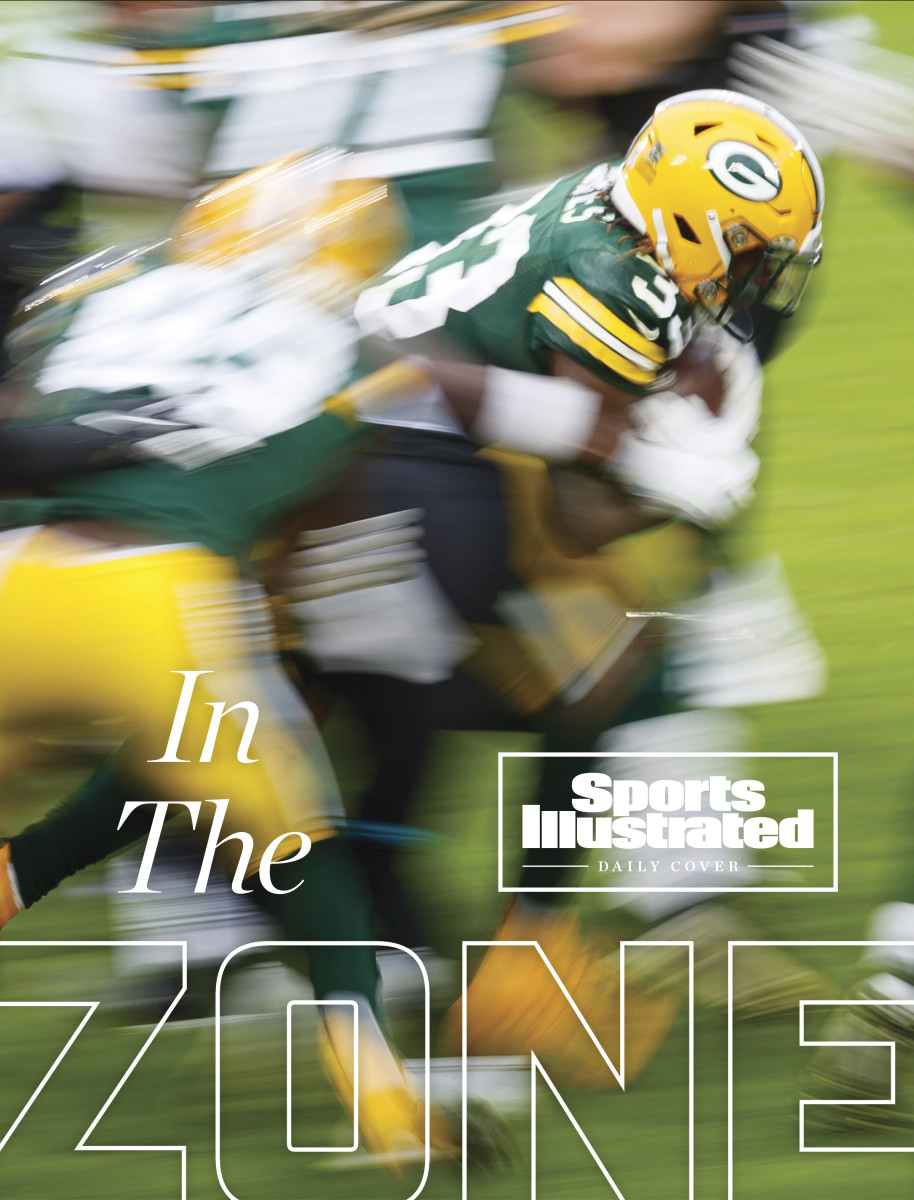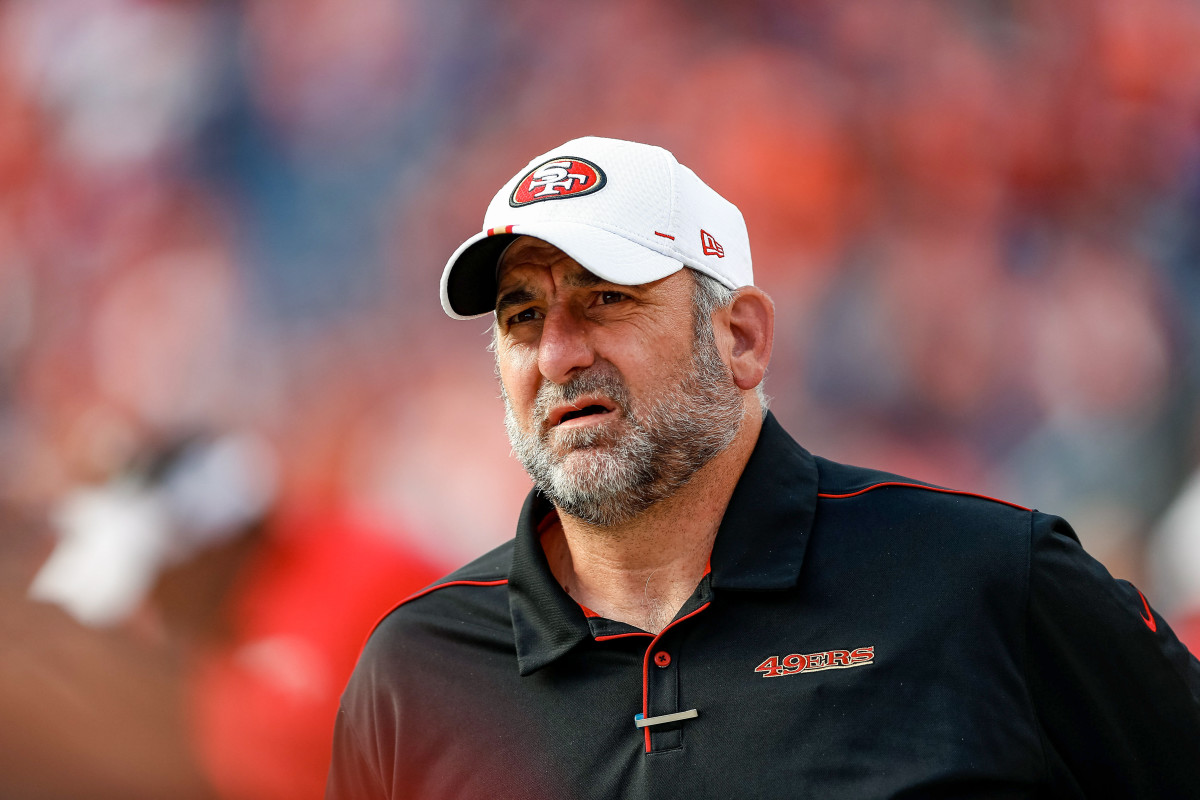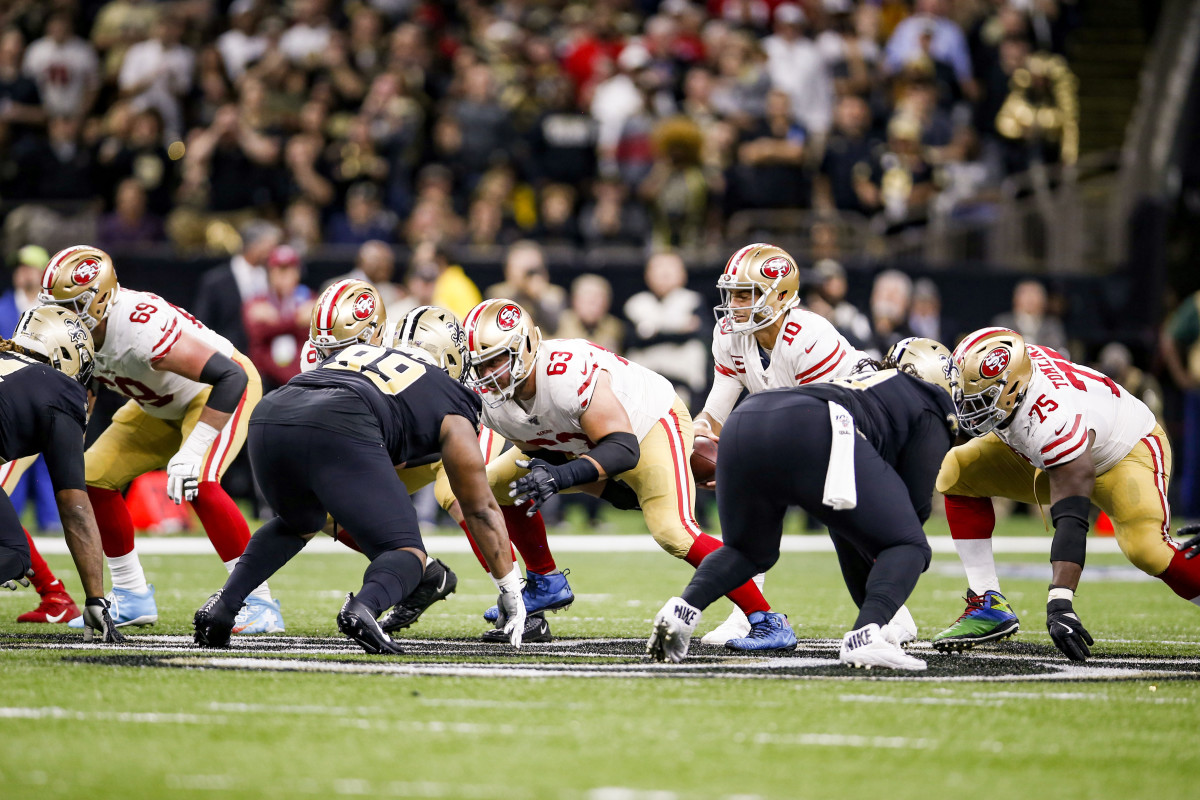Why Installing the NFL’s Trendiest Offense Is Harder Than You (or Your Favorite Team’s Owner) Think It Is
About six years ago, on the heels of the Mad Men finale and a general renaissance of woodsy, bearded machismo, whiskey became cool again and most of the good vintage makes in the world were bought up. The thing about whiskey is that it must be aged to taste good, and, when it gets purchased en masse, the distillers can’t magically replicate the process of sitting the product in oak barrels for a decade or more, properly immersing the drink in its natural flavors, allowing it to bloom. There are shortcuts, but the product doesn’t often hold up and has to be called something else once it hits the shelf.
Around the same time, something similar started happening with NFL offenses. And like with that ambered colored spirit, an offensive line coach must be properly aged to deliver the intended result. After Kyle Shanahan’s offense propelled the Falcons to Super Bowl LI, he became the head coach of the 49ers, reaching the Super Bowl again three seasons later. In that time, the repopularization of the outside zone running scheme, initially made famous by the late offensive line wizard Alex Gibbs and Kyle’s father, Mike Shanahan, was catching on due to its effectiveness against smaller, quicker defenses and the way it made life simpler for developing quarterbacks.
Kyle, Rams coach Sean McVay and Packers coach Matt LaFleur were all on Mike’s staff together in Washington back in the early 2010s, when they’d sit together after practice and watch plays millisecond by millisecond, noting the intricacies of the scheme, what made it successful and how it could expand into the juggernaut it’s now become. They could breathe it in fully. They knew how to manipulate its outer reaches. They knew how to make it more potent than it ever was before. This, at a time when other general managers around the league were feverishly drafting defensive backs to counter the passing revolution, leaving them susceptible to a thumping run game.

Fast forward to 2021, and McVay has been to a Super Bowl as well. LaFleur started his head-coaching career with two straight 13-win seasons and trips to the conference title game. Arthur Smith, who learned the offense from LaFleur in Tennessee and turned Derrick Henry into the league’s most prolific rusher after LaFleur left for Green Bay, secured a head-coaching job with the Falcons this past winter. Like most trends in the NFL, owners have been scouring the league for anyone and everyone familiar with the offense, just like they did when they hired all of Andy Reid’s assistants after Patrick Mahomes caught fire, or Bill Belichick’s assistants each year after their Super Bowl wins. Anyone who had a seat in the room got a promotion with the hopes that they could replicate what was happening around them.
The difference with Shanahan’s offense and its various clones is that it’s extraordinarily difficult to teach, especially up front, because, for offensive linemen, most of the required movements are unique to this scheme. Blocking schemes require specific personnel that exclude a lot of standard, lumbering type linemen. Some of the most critical blocks cannot be practiced, because the backside “cutting” techniques, which ask an offensive lineman to dive at the turf, tripping a chasing defender at the hips, are too dangerous to try out on fellow teammates who could easily sustain lower body injuries.
So, having the playbook and the play-caller is one thing. Having the person, or people, to turn some chemically doctored brown swill into whiskey? That’s a different issue altogether, leaving some to wonder whether there’s a coaching crisis on our hands, or just a bunch of premature spirits waiting to ripen.
“It’s gonna take you years, it’s not going to happen overnight,” Mike Shanahan told Sports Illustrated recently from his vacation spot in Cabo. “You gotta believe in it. You gotta be a product of the environment. It’s gonna take time.”
Mike Shanahan, like some other coaches, believes that the issue extends beyond just offensive line coaches. Installing outside zone is a holistic experience. The running backs coach has to believe in it and agree with the offensive line coach on the most intricate of details, like whether the running back should be aiming for the inside foot of the tight end or the outside foot of the tackle on an outside zone run. The quarterback has to believe in it. The defensive coordinator has to understand what’s going on.
“I don’t care if you’re the offensive line coach or the tight end coach, you need to understand all phases of the running game,” Mike Shanahan says. “There’s different types of defenses you’re facing every week, and so the scheme has to change. Read defenses, penetrating defenses, eight- and seven-man fronts. There’s lots of different directions you have to go.
“But if you really believe in the outside zone, if you can use those techniques in the running game successfully, you can adjust against all those defenses. It starts on a day-to-day basis, believing in what you’re doing.”
As Paul Alexander, an offensive line coach in the league from 1994 to 2018, says, the struggle to find able teachers also shines a light on an unnoticed defection of older coaching talent and their sage wisdom. That, combined with limitations on practice time, have led to some substandard offensive line play around the league.
“It used to be once you had a good veteran offensive line coach, you kept him,” Alexander says. “That part has changed.”
The reasons are plentiful. Good offensive line coaches are expensive, and the difference between a great offensive line coach and a replacement-level offensive line coach could be more than a million dollars. For example, Chris Foerster, Kyle Shanahan’s current offensive line coach in San Francisco who was also a part of the Shanahan-Washington think tank, was once believed to be among the highest-paid non-head coaches in the league. Bill Callahan, long believed to be the best and most decorated offensive line coach in the league, often causes a bidding war to ignite whenever his contract—which is often assumed to be a league high both in terms of money and contractual length for a position coach—expires. One industry source said that the average salary for in-demand offensive line coaches has climbed from the mid-to-high six figures well into seven figures and that, in the future, you’ll see more revered offensive line coaches awarded coordinator titles or force their way into offensive coordinator consideration under the threat of moving on. This would explain the recent popularization of offensive line coaches having “run game coordinator” attached to their name on the staff masthead.

Before the outside-zone gold rush, O-line coaches were seen as a way to save money, with many of the younger coaches in the NFL tapping into networks in their own age range, which often meant dipping into the collegiate ranks. This, to the purists, is a distressing issue.
Alexander, who does personal coaching and consulting now, finds himself on college campuses throughout the country. The offensive line coaches are bogged down with recruiting, which is often the most critical part of their job. During staff meetings, they’ll be firing off texts to prospects or communicating with them on social media. There is so much theater and politics involved with the job that it robs coaches, who already complain about being strapped for practice time, from teaching fundamentals, nevermind the complexities of a scheme like Shanahan’s, which is a synchronized ballet of five 300-pounders, all seeing and feeling the same thing.
While it doesn’t mean the pipeline is dry, it does mean that coaches moving up the ladder will need time to study, time to immerse themselves in what has become something of a foreign language around the NFL and time to work with players during a surge of labor disputes, when large portions of teams are abandoning voluntary workouts (a situation that, coaches say, has created a bit of panic on its own).
That holding pattern means, at the moment, there’s a small group of coaches with significant experience, including the likes of John Benton (Jets), Adam Stenavich (Packers) and Foerster (49ers). The three are part of the Offensive Line Collective, which is partnered with the QB Collective, a quarterback developmental pipeline and think tank that features some of the most prominent offensive minds in the NFL, like (you guessed it) McVay, LaFleur, Shanahan, 49ers offensive coordinator Mike McDaniel, Jets offensive coordinator Mike LaFleur, 49ers quarterbacks coach Rich Scangarello and Packers offensive coordinator Nathaniel Hackett. The wait list for those offensive line coaches’ assistants, like Butch Barry (San Francisco), Luke Butkus (Green Bay) and the offensive line staff in Los Angeles, could also be long.
Those who know these coaches want to make one thing clear: They don’t believe they have all the answers; rather, they are simply good at something that is extraordinarily valuable right now. One coach said it was no different than when the West Coast offense took hold in the 1980s and there was a shortage of people who knew how to run the blocking scheme.
From a practical standpoint, this means that some owners who have purchased an offensive system might have done so without knowing that some of the most critical cogs making it run were not available to them. So, a new head coach must teach his coaches how to teach, pray that they can absorb the information on their own, or, as one coach saw from close range at a recent stop, abandon the planned installment of the offense altogether, knocking out a promising season before it could even get started.

It’s a blistering Wednesday afternoon in Florham Park, N.J., and Benton, the Jets’ offensive line coach and run game coordinator, is standing to the side of a five-man sled watching his starting unit surge out of its stance together.
When timed perfectly, the angular reaching steps are like a well-coordinated dance. Everyone moves diagonally to the left and upward toward the outside shoulder of the sled dummy positioned slightly in front of them. The scheme thrives on the marriage of run and pass, essentially making every play look like a stretch run to the outside, which means every play is blocked like an aggressive running play. This gives offensive linemen an obvious advantage on passing downs because they’re not forced to drop back and single themselves out against the leverage of a surging edge rusher or defensive tackle.
At its core, outside zone is a scheme that asks a running back to make a single cut. The running back has a predetermined point that he is sprinting to laterally and, at that point, plants his foot and accelerates upfield. Unlike other runs (inside zone, which asks running backs to make multiple cuts), it takes away some of the guesswork, with the trade-off being more athleticism demanded of the offensive line.
Linemen on the play side have to “run” with the back. It’s a quick movement with the direction of the play where a lineman may be initiating contact within a step or two out of their stance. Linemen blocking on the backside “cut” defenders, which is an easier and more effective block that eliminates defenders trying to run the back down and rally to the ball.

When Geoff Schwartz, an NFL offensive tackle for eight seasons, throws on Kyle Shanahan tape now he notices something fascinating. As Shanahan has grown with the scheme, he has figured out a way to seriously limit or eliminate altogether some of the more labor-intensive front-side blocks. He’ll position skill-position players in specific ways and close the splits (the distance between each offensive lineman). Because of the positioning of a tight end, receiver or fullback, the defense tightens its formation, allowing more offensive linemen to execute the easier “cut” style blocks, while limiting how far any blocker has to run to execute a block.
“This doesn’t get talked about nearly as much as it should,” Schwartz says. “He uses his tight ends to create leverage for his offensive linemen so they’re never blocking uphill. They’re never running too far to reach their target. From the start, they’re in a great position.”
This is what his father, Mike, is talking about, the kind of holistic growth that allows something to blossom for this long. The tight end coaches add a critical note, which makes the running backs coaches elated. The offensive line coaches are less taxed, and their players are more successful. Meanwhile, in an NFC championship game, your lead running back is gaining 7.5 yards per carry. The system creates a concrete belief structure. It evangelizes itself and only continues to grow.
This is what owners think they’re getting when a candidate promises to bring the offense from somewhere else (whether or not the coaches directly worked with Shanahan, it’s estimated that more than 30% of the league is operating with some of the key principles of the offense). What those owners see, though, is the product of time. Patience. Aging in a cask.
In reality, they can only hope that some of the most basic ingredients are there, starting with the offensive line coaches that are flying off the shelf. Time will tell if the product gets watered down.
More NFL coverage:
• The Problems With the NFL’s Deshaun Watson Investigation
• The Patriots Can’t Rule Out Mac Jones
• The NFL Head Coach Power Rankings
